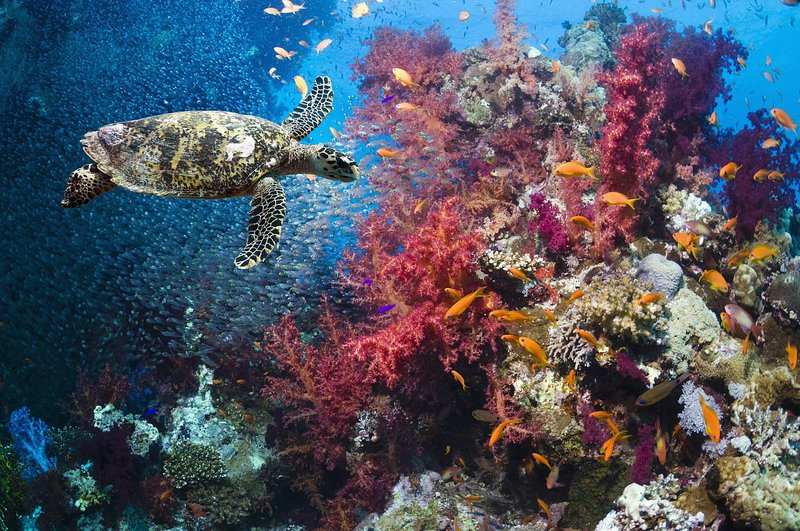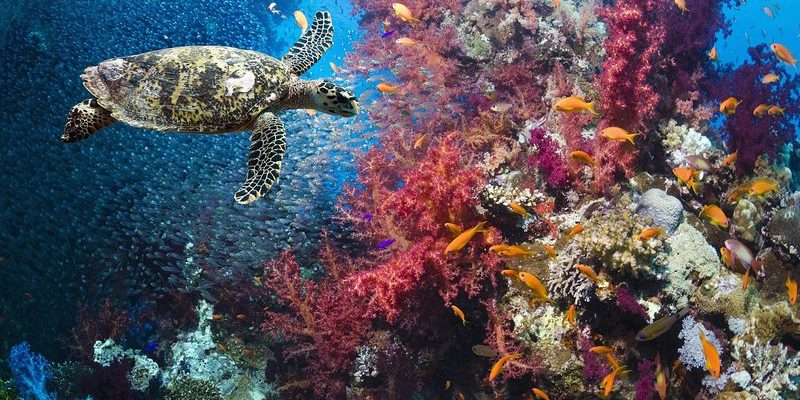
Sea turtles have been around for millions of years, and throughout that time, they’ve developed a unique relationship with the creatures and plants around them. It’s almost as if they’re the unsung custodians of the ocean, doing their bit to ensure everything runs smoothly, even if they don’t get much credit for it. You might be wondering just how these gentle giants manage to influence their environments. Well, let me explain by exploring their roles step by step.
1. Grazers of the Ocean: Maintaining Seagrass Beds
One of the primary roles of sea turtles is their grazing habits, particularly on seagrass. These underwater meadows are vital because they provide habitat and food for a variety of marine species, including fish and invertebrates. When sea turtles munch on seagrass, they’re not just having lunch; they’re actually helping to keep the grass healthy.
How do sea turtles help? By trimming the seagrass, sea turtles encourage the growth of new shoots, making the meadows healthier and more resilient. This is crucial because healthy seagrass beds can improve water quality and offer protection from coastal erosion. Think of it as a gardener tending to a garden, ensuring that plants grow strong and vibrant.
Additionally, seagrass beds play a critical role in carbon storage, helping to combat climate change. So, when sea turtles feed, they’re not just sustaining themselves; they’re promoting a healthy environment for countless other marine creatures while also contributing to our planet’s fight against global warming.
2. Nutrient Cycling: Fertilizing the Ocean
Have you ever thought about how nutrients move through ecosystems? Well, sea turtles are key players in this process. As they travel across vast ocean areas, they consume jellyfish, crustaceans, and other marine organisms. When they digest these meals, they excrete nutrients back into the water, like a natural fertilizer.
What does this mean for marine life? The nutrients released by sea turtles support a diverse range of other species, from phytoplankton to larger marine animals. This nutrient cycling is essential for maintaining the health of ocean ecosystems. It’s similar to how a healthy compost bin enriches a garden, promoting growth and biodiversity.
Moreover, the nutrients help stimulate primary production in the ocean and can even influence the distribution of marine life. It’s fascinating to think that these leisurely swimmers can have such a significant impact on their surroundings, all while going about their daily lives.
3. Sea Turtles as Prey: A Source of Food for Others
In the grand scheme of the food web, sea turtles are not just contributors; they’re also a key food source for various predators. While it’s easy to see them as majestic creatures gliding through the water, they also serve as a meal for larger predators, such as sharks and certain species of whales.
Why is this important? The presence of sea turtles in marine ecosystems helps support the overall health of these predator populations. When a predator like a shark feeds on sea turtles, it ensures the balance within the ecosystem remains intact. Just like how every player on a sports team plays a role in winning the game, sea turtles help sustain the species that rely on them for survival.
This predator-prey relationship is a prime example of how interconnected our oceanic systems really are. It’s a reminder that every species, no matter how big or small, contributes something valuable to the environment.
4. The Impact of Sea Turtle Nesting
When sea turtles come to shore to nest, they don’t just lay their eggs and leave; they have a lasting impact on coastal ecosystems as well. Sea turtle nests contribute to the health of sandy beaches, which serve as critical habitats for various species.
What happens during nesting? As the female turtles bury their eggs in the sand, they help aerate the soil and promote the wellbeing of plant life. This creates a more stable habitat for nesting shorebirds and other coastal fauna. The process also ensures that the nutrients involved with the eggs break down and enrich the surrounding sand, supporting a variety of organisms.
Furthermore, the hatchlings’ journey back to the ocean is a spectacle of nature. As they scramble across the sand, they not only create excitement for onlookers but also help sustain the marine food web. Each hatchling that survives becomes part of the ocean community, and their presence reinforces the cycle of life in the sea.
5. Threats to Sea Turtles and Their Ecosystem Role
Unfortunately, sea turtles face numerous threats, many of which stem from human activities. Overfishing, habitat loss, climate change, and pollution put significant pressure on these vital creatures. When sea turtle populations decline, it can create a ripple effect throughout marine ecosystems.
Why should we care? The loss of sea turtles can lead to unchecked growth of jellyfish populations, which can disrupt the balance of marine life and harm fish populations that are important for commercial fisheries. It’s a situation that can lead to imbalances, impacting everything from fishing communities to the health of coral reefs.
To put it simply, the decline of sea turtles isn’t just a loss for conservation; it threatens the overall health of our oceans. Protecting these creatures is crucial for maintaining marine diversity and supporting resilient ecosystems.
6. Conservation Efforts and What You Can Do
Many organizations and communities are working tirelessly to protect sea turtles and their habitats. Conservation efforts include creating protected marine areas, reducing plastic pollution, and promoting sustainable fishing practices. These initiatives aim to ensure that sea turtles continue to play their critical roles in marine ecosystems.
What can you do? You can contribute by supporting organizations that work on sea turtle conservation, educating others about their importance, and making simple lifestyle changes to reduce plastic waste. Every little action counts. For instance, opting for reusable bags and avoiding single-use plastics can help keep beaches free from debris, making nesting sites safer for sea turtles.
Additionally, you can take part in local beach clean-ups or simply spread awareness about the challenges sea turtles face. By being informed and engaged, you can be a part of the solution—much like the sea turtles that help sustain the beauty and health of our oceans.
In summary, sea turtles are much more than just charming marine creatures. They play essential roles in maintaining the health of marine ecosystems, from grazing on seagrass to enriching coastal environments and supporting food webs. You might not think about it daily, but the well-being of our oceans is closely tied to the presence of these gentle giants.
By understanding their importance and advocating for their conservation, we can help ensure that future generations will continue to marvel at these incredible animals. Let’s work together to protect our marine friends and the delicate balance they help maintain in the ocean. After all, a healthy ocean is a thriving ocean, and it needs everyone’s help to stay that way.

